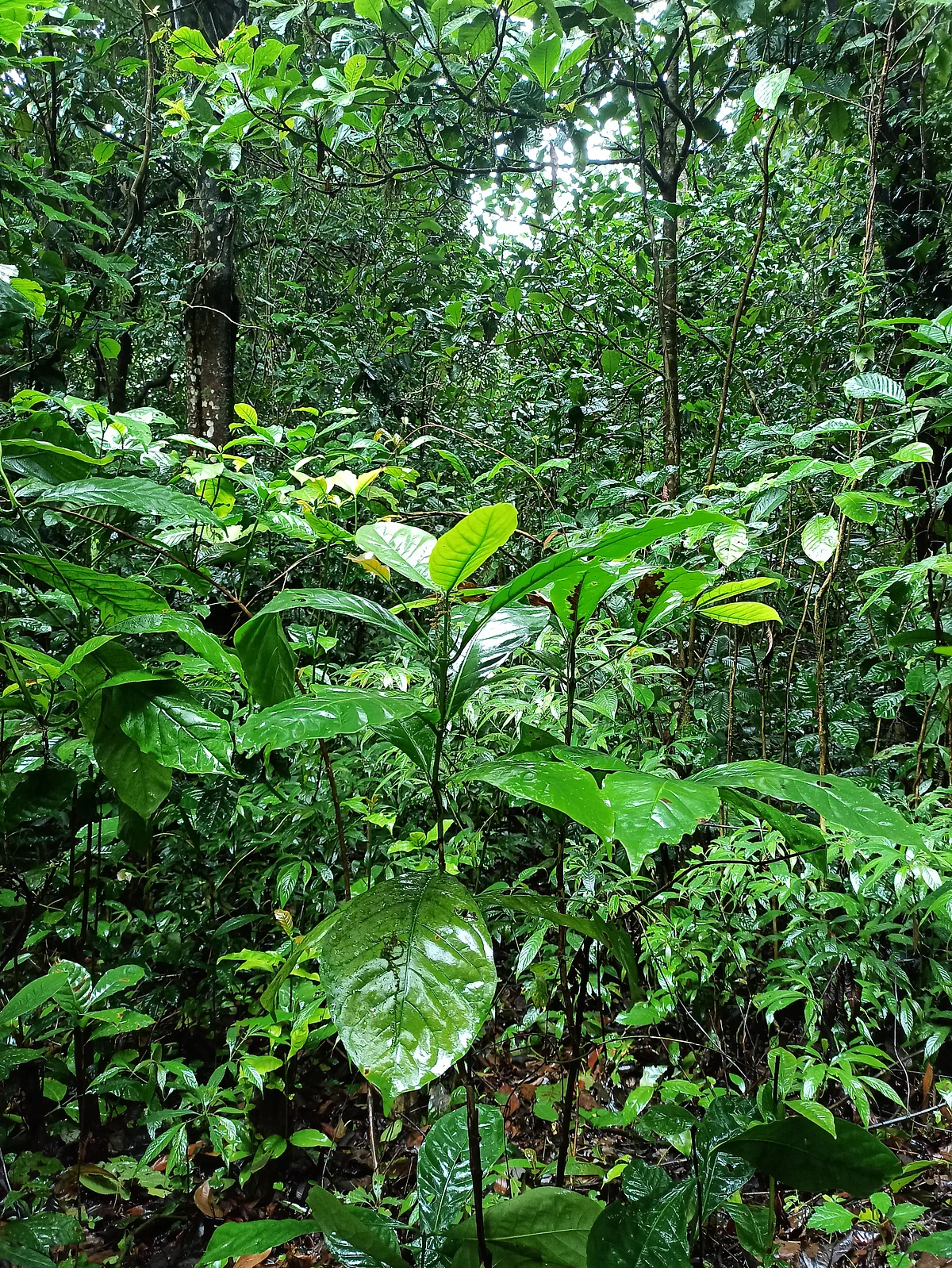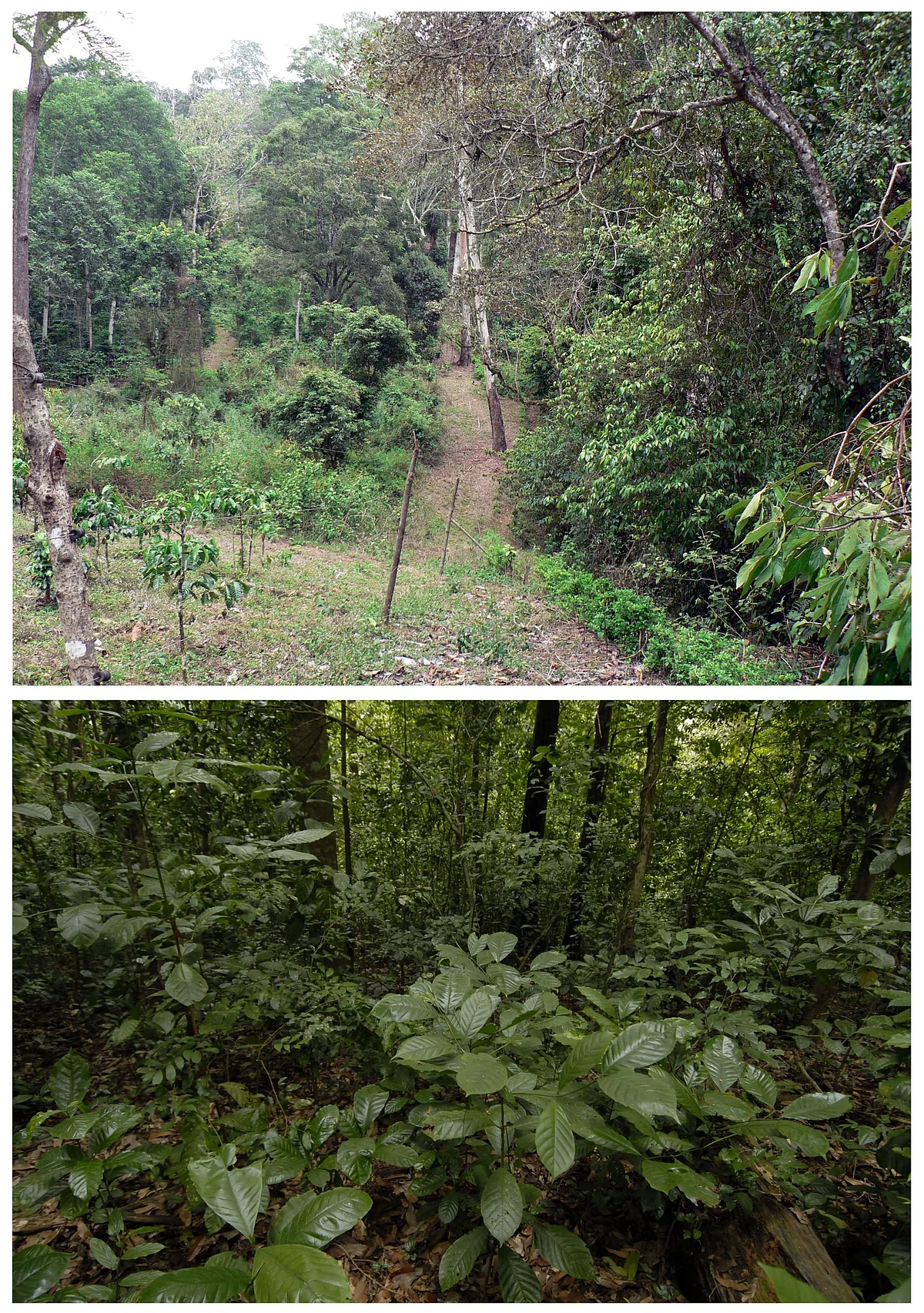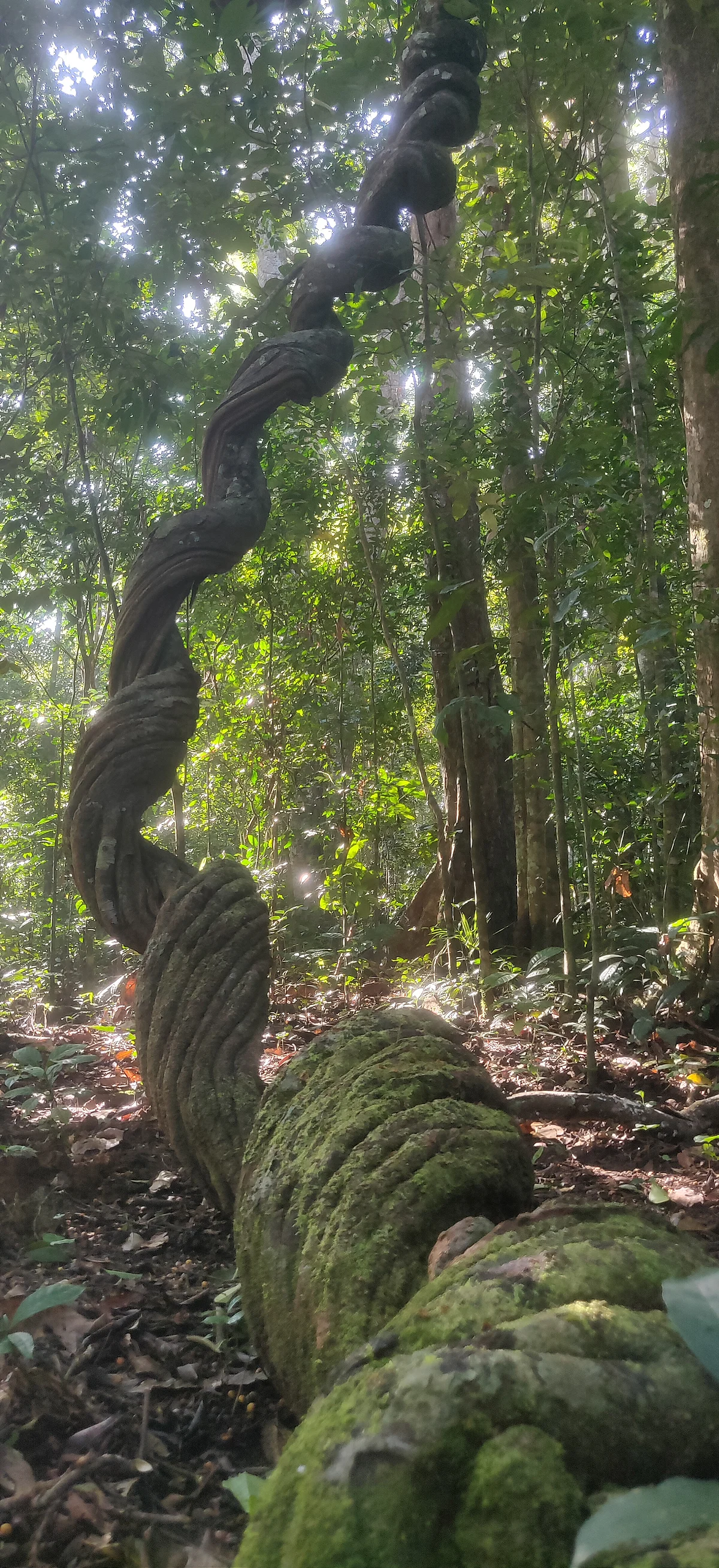How forest degradation affects plants and ecosystem structure and function
Earth’s tropical forests have become highly fragmented. While few large and relatively undisturbed tracts still remain, most have been carved into smaller fragments scattered over a sea of agriculture, settlements, and other intensive land-uses. Small, exposed, and isolated forest fragments experience very different environmental conditions compared to larger intact forests. This can affect rainforest plants in various ways. Understanding whether and how fragmentation affects plant populations, amplifies threats to species, and disrupts ecosystem structure and functioning is crucial for conservation and restoration. Many previous and ongoing research projects in our program align with this theme.
Plants in fragments and continuous rainforest
One way to understand how fragmentation affects plant communities is to compare communities in forest fragments to those of intact, continuous forests. Such comparisons of trees, lianas (woody climbers), shrubs, and herbs, using standardized sampling methods, have revealed many interesting and informative trends, and helped guide our restoration efforts. While rainforest trees in fragments are fewer in number and poorer in diversity than in continuous forests, shrubs and herbs – including many of the alien invasive variety – are more numerous and diverse in fragments. Still, even in a relatively small sample area of 4 ha for trees and lianas or 0.16 ha for understorey plants, rainforests in the Anamalai Hills retained an astonishing plant diversity. There were 144 tree species, 60 liana species, and 108 understorey plant species; of these 70 species are endemic to the Western Ghats.
Rainforest trees regenerate poorly in fragments, and important reasons for this appear to be small populations of adults and limited seed dispersal by large birds and mammals in fragmented landscapes. These declines in rainforest plant biodiversity are accompanied by declines in ecosystem functions such as carbon storage – a study found that rainforest fragments store 40% less carbon per unit area than continuous forests in the central Western Ghats. Looking across fragments we see differences in the level of degradation. Some are highly degraded, with sparse tree cover, very few rainforest tree species, and mostly shade-avoiding alien invasive plants in the understorey. Such sites are targeted for active restoration involving intensive weed removal and tree planting. Other fragments appear less degraded because they retain more trees and have denser canopies and shaded understories, possibly due to better protection. However, they still lack many of the species and floristic attributes that characterize intact rainforests. Such closed-canopy fragments are an opportunity to attempt less intensive restoration methods such as enrichment planting and assisted natural regeneration.
Invasive alien plant species in fragments
Forest fragments are especially vulnerable to invasion by alien plant species. These include wild alien invasives such as Lantana camara and crop plants such as robusta coffee (Coffea canephora) that can colonize from surrounding lands and proliferate within fragments. We study alien invasive plant species in rainforest fragments and have found patterns to differ from species to species, depending on their ecologies. For example, shade-avoiding invasives such as L. camara and Chromolaena odorata are prolific in more degraded parts of fragments, while shade-tolerant robusta coffee can invade into even relatively undisturbed parts of fragments, provided robusta coffee farms or fruiting coffee bushes are nearby. Our research on the spread and dynamics of invasive plants, and experiments with their removal, guide our restoration efforts in degraded rainforests.
Collaborators
Plants in fragmented and continuous forests: N. Ayyappan, N. Parthasarathy, M. Arthur Selwyn, L. Arul Pragasan, S. Muthuramkumar, Dayani Chakravarthy
Alien invasive species in fragments: Atul A. Joshi, Dayani Chakravarthy





